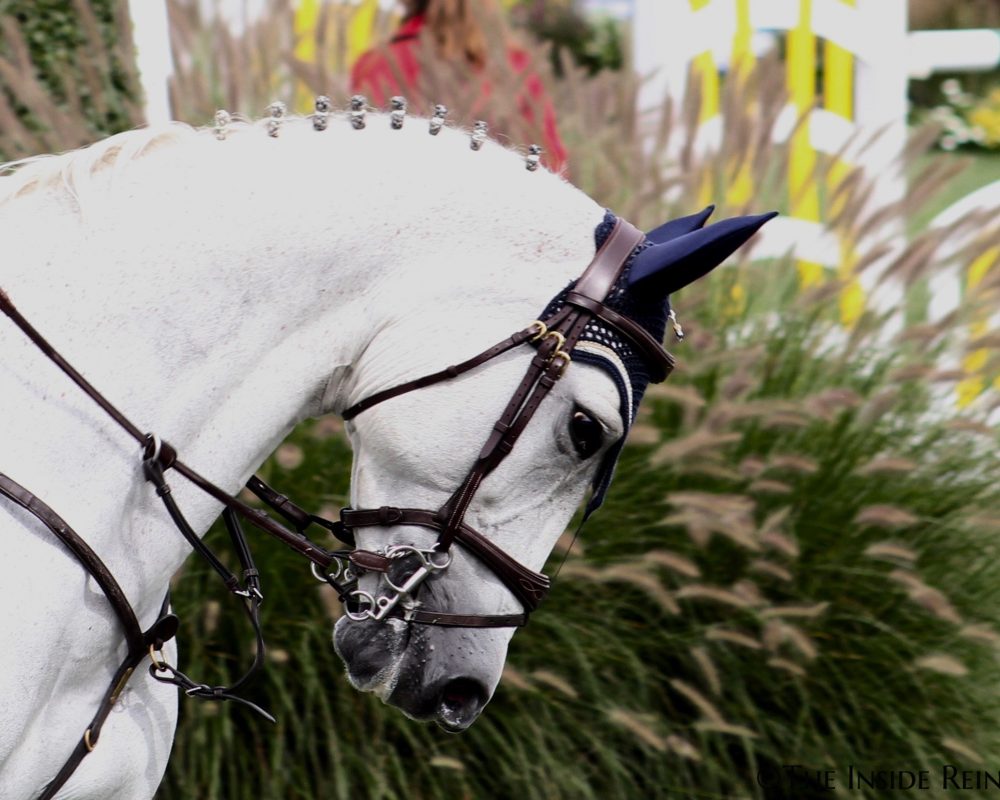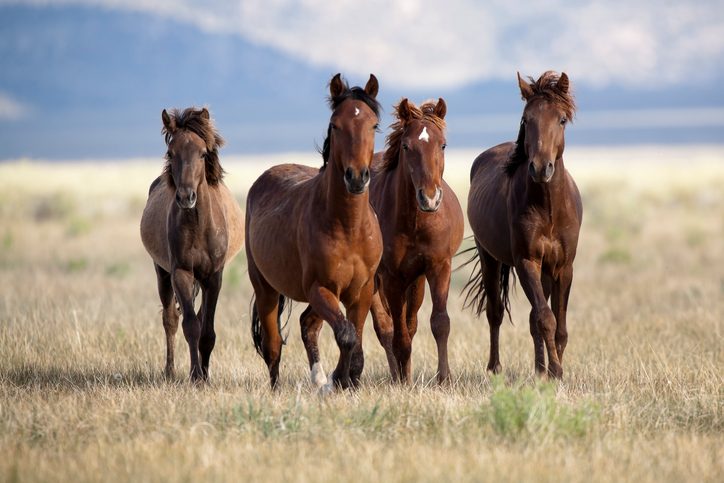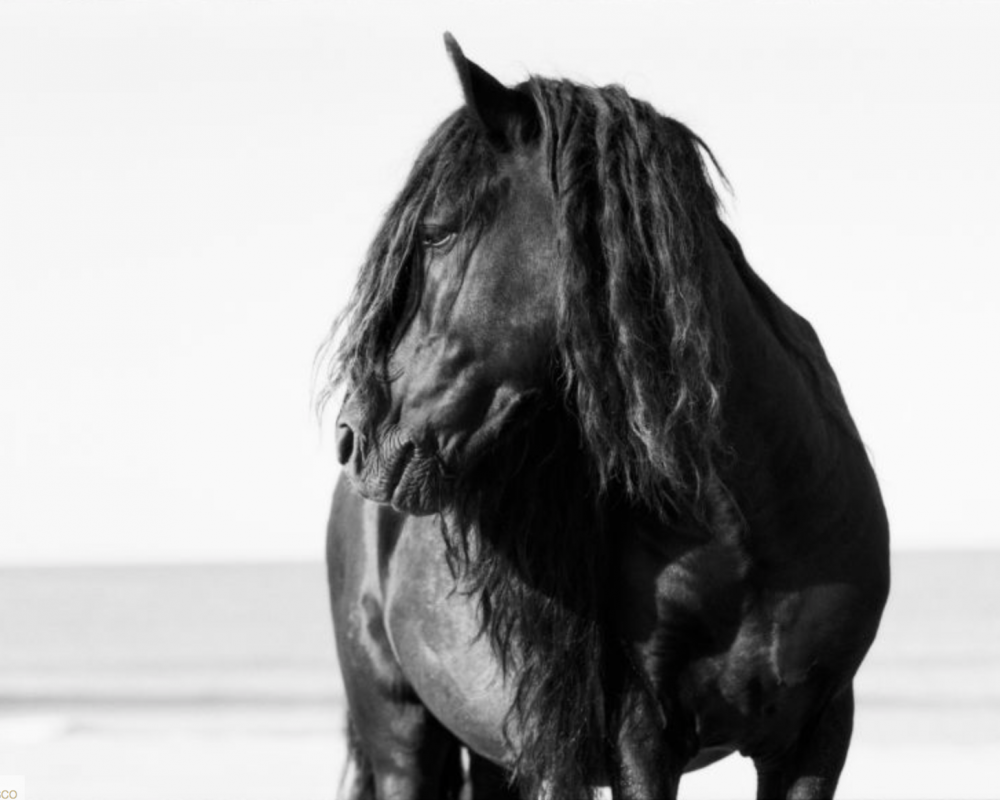Some know him as Enrique, others just call him “La Pajara,” but whatever the title, Enrique Gonzalez is having a stellar year with his once-in-a-lifetime mare, Chacna.
A native of Mexico, Gonzalez’s passion for horses was passed down from his father, an owner of Mexican quarter horses. It wasn’t until the age of 16 that Gonzalez began attending a riding school. There, Gonzalez worked and taught youngsters – anything that was necessary in order to throw his leg over one of the stable’s jumpers.
By 1982 Gonzalez was Mexican champion at 1.10 meters and went to Guadalajara where he became part owner of his first stable. It was around this time that the nickname “La Pajara” took hold. La Pajara Peggy was a Big Bird-esque character on Mexican TV. Students and colleagues joked that Gonzalez emulated the character with his big gestures and passionate enthusiasm toward whatever he was doing in a given moment. “One friend of mine started saying I looked like Pajara Peggy, jumping around and screaming. To this day there are people that don’t know my name, they only know me as Pajara. My older friends still call me Peggy,” says Gonzalez of the moniker.
In 1987, while still in Guadalajara, Gonzalez co-founded the region’s first major riding club, Club Hípico La Puerta, with Mexican riders Carlos Alvarez del Castillo and Carlos Valdez Lacarra.
Gonzalez regularly represented his country on the Mexican National Team. It was during those years that he benefitted from the guidance of chef d’equipe Nelson Pessoa, who became both a mentor and friend to Gonzalez. Gonzalez also spent time in California as a working student for Hap Hansen and eventually benefitted from the tutelage of Lt Col Gerry Mullins, an Irish trainer from the army who Gonzalez calls “one of the best in the world.” It was Mullins who educated Gonzalez on how to develop horses from novice levels to Grand Prix jumpers. Gonzalez has turned those skills into a business, developing top horses including Meredith Michaels Beerbaum’s Comanche.
The guidance of greats like Pessoa, Hansen, and Mullins, combined with Gonzalez’s own experience in the saddle, has resulted in a few keys philosophies that Gonzalez brings to both riding and training: patience and discipline. “I tell all my students the horse is alive, it’s not like a tennis racket that you just put in the closet and take it out when you want to play,” says Gonzalez, “If you want horses to perform and become athletes you need to work them everyday to be properly conditioned and, as a rider, you need to have the discipline to come every day to ride your horse.”
No horse has tested, and then proven, Gonzalez’s theory of patience and discipline quite like Chacna. Gonzalez obtained the now 9-year-old Hanoverian mare as a 6-year-old from the Schockemöhle stables in Germany. “Chacna is a mare that was quite hard to bring along as a 6 and 7-year-old,” says Gonzalez of the head-strong Chacna, “she had a very strong character and, like every beautiful woman, you need to treat her right and let her think at least that everything is going her way. If you make a fight with her she’ll win, there’s no discussion.”
Gonzalez admits to nearly giving up on the mare at the end of her 7-year-old year but then, as an 8-year-old a change occurred and she started to focus, turning into the superstar she is now. “She’s so special – clever and smart and has all the qualities I would look for in a sport horse. She’s athletic, elastic in her body, and has a super mind. She’s spicy and spooky but always positive. I haven’t had a horse with her ability in my whole career.”
Gonzalez and Chacna have had some top finishes this season, picking up a win at the Longines FEI World Cup™ qualifier in Del Mar and 2nd place in the Las Vegas qualifier. While big wins, for Gonzalez, nothing compares to winning a bronze medal at the 2011 Pan American Games on home turf. “I was the first Mexican to go into the ring in the Pan American Games. When I walked in probably three thousand flags raised from the seats and it was just unbelievable. Going to the Olympic games and world championships was fantastic but nothing compares to medaling in your home country,” says Gonzalez of the experience.
As a trainer, his top success was taking his own son, Cristobal, to the North American Junior & Young Rider Championships last summer. “The team won gold and Carlos Hank, who trains with us, was silver individually. As a trainer you see all the work they put in to prepare the horses for that specific championship and to win medals is an unbelievable feeling.”
In 2014, Gonzalez launched the San Diego-based E2 Stables in collaboration with Brazilian show jumper Eduardo Menezes. E2 focuses on the development of young horses into top-flight athletes, as well as campaigning their superstars Chacna and Menezes’ Quintol, the horse with which the Brazilian competed in Rio last summer.
Having watched the sport develop in America, South America, and Europe, Gonzalez has seen many changes over the years, particularly the last decade. He notes a major increase in prize money and a rise in the number of international competitions as being the biggest changes, though that doesn’t mean the sport’s development isn’t without flaws. “The top 30 riders have access to go to any shows they want, but the gap between other shows is growing more and more. You have the top athletes and also people that are able to show because they buy their way into the competition,” says Gonzalez. “Our sport needs to grow into more sponsorships and TV coverage so the organizing committee doesn’t have to charge the riders. I use the example that we’re the clowns of the circus and we’re paying for the show. I think it’s going in that direction.”
Gonzalez notes that places like Wellington and Spruce Meadows provide more opportunities for up-and-coming riders to have a place at the top, but Europe still faces a major challenge. “If you go to Europe there are many talented riders that never have a chance to make enough points to compete in bigger shows because they’re so limited. How can you make enough points to compete when you’re not allowed to go to the shows?”
Gonzalez believes sponsorship will be a major key to the future and has hope for formats like the Global Champions Tour and the recently introduced JumpingClash Challenge. “I believe the future is heading more toward private or sponsored jumping teams rather than Nations Cup teams. The Nations Cup teams are going to be at big 5 star CSIOS but there are going to be a lot of shows with sponsored teams and that’s going to be a way of bringing big names of companies to the sport.”
Gonzalez is also quick to caution that the sport is in peril of facing a public perception problem thanks to ill-worded guidelines such as the Blood Rule. “The language they [the FEI] use makes us look like we are abusers. Many of these times, especially with spurs, these are accidents that happen in the ring. It’s okay that they stop the horse from showing but when it’s accidental and not abuse they have to be careful,” says Gonzalez, adding: “Everybody who owns a horse and goes to a horse show has to consider that we are on the eye of everybody. Riders need to treat their horses in the best way possible both for the welfare of the horse and the effect the sport.”
Gonzalez currently leads the Longines FEI World Cup™ standings in the North American Western sub league and hopes to maintain his place at the top. He’ll compete Chacna at the qualifier in Wellington, where he’s based for the season, and then on to Omaha where he’ll compete for the title of World Cup Champion.
By Ashley Fairfield-Remeza



Leave a Reply